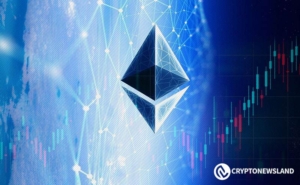In the DeAI craze, is EMC the value oasis of this bull market?
What is truly worth mining is often those projects with a lower market cap. The current EMC is undoubtedly such a hidden alpha and value opportunity. If the project team cooperates to do some marketing activities and so on, waiting for the right timing, EMC should be able to perform well.
Source: EMC Community Enthusiast
What kind of AI project can succeed in the crypto world? The answers can vary widely. But first, let's set aside more fantasies, fiction, and narratives, and look for answers from the world's top-tier and most valuable AI companies.
NVIDIA, one of the world's only three companies with a market cap exceeding three trillion dollars, is not only the core pillar of global AI applications but also the undisputed dominator of GPU computing power. So, how does NVIDIA make money? The answer may not be that complex—the core of AI projects lies in computing power, especially the competition for GPU computing power. The business logic of today's AI industry is nothing more than a different form of the "selling shovels" business.
Recently, NVIDIA released its financial results for the third quarter of 2024, and the data is still eye-catching: $350.8 billion in revenue, a 94% year-over-year growth, exceeding analysts' expectations of $332.5 billion and surpassing the company's own performance guidance ($318.5 billion to $331.5 billion). The net profit reached $19.309 billion, compared to the previous quarter's "revenue of $300 billion and net profit of $165.9 billion," setting a new record. These figures not only exceeded the market's expectations but also once again confirmed NVIDIA's irreplaceability in the AI computing power field.
Not only in the traditional financial sector, but back to the crypto world, the AI MEME trend is also sweeping in. From the initial AI MEME to the current AI Agents, more and more large-scale AI-based applications are emerging, attracting attention from a large number of capital and developers.
CZ, who has recently been released from prison, is also very interested in AI. His recent tweet also mentioned the potential of AI and blockchain integration: "AI tagging (or AI data processing) is very suitable for on-chain completion. It can leverage global low-cost labor, eliminate geographic biases, and enable instant payments through cryptocurrency." At the same time, Musk announced that xAI will establish an AI game studio, with the goal of "making games great again."

For a market like the crypto world, full of "benefit mythologies," replicating a 1:1 NVIDIA may be somewhat idealistic, considering this is a giant with significant technological accumulation and market dominance. But if duplicating NVIDIA's profit-making "trick"—that is, expanding the market with the help of robust computing power and GPU's core competitiveness—perhaps may not be that difficult. Because behind all AI Agents projects are massive AI models, and behind these models is the support of GPU computing power. Therefore, computing power remains the core driving force for the success of AI projects in the crypto world.
The AI Computing Power Oasis in the Crypto World
In this context, a project that has pioneered GPU innovation and essentially covers all AI applications and possibilities you can think of in the current market: Layer 1, computing power leasing, decentralized AI+Web3 creative platform, and AI agent project—Edge Matrix Chain, can be considered a very good ambush target, even a value oasis.
Lifting the "Heart" of AI
Traditional Layer 1 blockchains have demonstrated powerful capabilities in many areas, but when you turn your attention to AI applications that require massive computing power, you will find that their computational limits cannot support these huge demands at all. AI, especially behemoths like Large Language Models (LLMs), require not ordinary computing power but the unparalleled computing power of GPUs. In the future of AI, without GPUs, nothing counts.
EMC has realized this, thus developing a distributed GPU computing network aimed at providing sufficient computing power support for AI applications. Each EMC node not only provides ordinary computing power but also provides powerful GPU support, allowing developers to run complex AI models in a decentralized environment seamlessly. What is even more astonishing is that all this computation can be completed at a cost below traditional cluster computing. Yes, performing massive tasks is no longer exclusive to cloud computing giants and no longer requires exorbitant costs.
EMC's network architecture further subverts the limitations of traditional blockchains, not only possessing the advantages of low latency and high throughput, ensuring ultra-fast data storage and efficient retrieval but more importantly, providing an ideal stage for AI applications that require frequent data exchanges. In addition, EMC adopts a modular design, allowing developers to flexibly build protocol layers, network layers, application layers, and asset layers according to their needs. This design not only allows developers to focus on innovation without worrying about the limitations of the underlying architecture but also lays the foundation for the widespread application of decentralized AI.
Speaking of innovation, EMC does not stop at the technological level; it has also brought a revolutionary product—the EMC Hub. This decentralized AI computing power scheduling platform provides unprecedented support for AI developers. Through EMC Hub, developers can build commercial AI services like Midjourney in just a few hours, at a cost that is only 30% of traditional development methods.
Furthermore, EMC has closely collaborated with JarvisBot to further advance decentralized AI capabilities in the market. JarvisBot, as an AI agent strongly supported by the EMC network, has successfully integrated into the TON ecosystem and provided users with a variety of AI services: from article writing and image generation to content summarization and video creation. The launch date of this AI agent was in June of this year, making it ahead of the market trend by almost half a year.
He Who Owns GPUs Owns the World, Possessing the Ultimate Hard Currency
NVIDIA's GPUs are virtually the lifeblood of the entire industry, especially the NVIDIA H100 GPU, currently the latest GPU powerhouse.
Due to its critical importance, GPUs have also become an extremely scarce resource. Particularly as AI has gradually entered the "era of large models," the demand for GPUs has skyrocketed, making the market's supply-demand relationship increasingly tense. Acquiring high-performance GPU resources, especially top-tier chips like the NVIDIA H100, has become a form of "hard currency." For many AI companies, especially those in the early stages such as startups, obtaining sufficient GPU resources is incredibly challenging.
This also explains why major investment firms, such as a16z, are willing to stockpile a large number of H100 GPUs at a high cost, renting out GPU resources to their portfolio companies in exchange for equity or other benefits. It can be said that he who owns GPUs owns the world. However, as the market demand is so urgent and the supply is extremely insufficient, the "scarcity" of NVIDIA H100 GPUs has also provided investment opportunities for many industry pioneers.
EMC (Edge Matrix Chain) has leveraged this background and, utilizing its innovative Layer 1 network, bridged GPU computing power with the DeFi platform, introducing an unprecedented GPU tokenization solution. This solution not only addresses the liquidity issue of GPU computing power but also transforms these "high-performance hardware" into tradable assets, thereby enabling more users to participate in this AI computing power ecosystem.

Then, at the Token2049 conference on September 19, 2024, EMC showcased a highly innovative NVIDIA H100 SuperPOD Live Demo.
This modified machine, the NVIDIA H100 SuperPOD, consists of 1024 H100 GPUs, possessing immense computing power to provide significant support for decentralized platforms. This computing capacity can not only sustain complex AI model training but also generate annual revenues of up to $15 million through a GPU resource leasing model.

Through this demonstration, EMC not only showcased the decentralization of AI computing resources but also revealed how, through tokenizing GPU computing power, it is creating new economic opportunities and revenue streams for global users. What is this concept? This is not just the epitome presentation of AI technology but also a deep dive into the commercialization of AI computing power.
But this is not the most exciting part yet. By integrating these GPU computing resources into a decentralized platform, EMC has proposed the concept of tokenizing this high-performance hardware. In other words, global investors and developers can, through blockchain technology, break down these computing resources into small units, transforming GPU computing power into a tradable asset. As a result, anyone can buy and stake this GPU computing power on the EMC platform, earning approximately a 12% Annual Yield Rate (AYR) and directly participating in the AI computing wave.
Currently, the RWA assets offered on the EMC platform mainly originate from top-tier high-performance GPUs such as NVIDIA A100, H100, and other models like 4090 and 3090. These GPU computing assets are provided by multiple ComputeDAO members, including key participants like NWG and exaBITS.
This innovation not only makes AI infrastructure more decentralized but also, through tokenization, breaks the traditional "high barrier" of GPU resources that originally belonged to a few large enterprises, enabling every ordinary user to participate. Through EMC's technology, AI computing power has become a liquid asset instead of expensive hardware held by certain institutions.
Why Is EMC Underrated?
After introducing what EMC is doing and its unique selling points, let's revisit the most important question: why do I think EMC is underestimated?
Let's start with the data. EMC currently covers multiple innovative areas: Layer 1 blockchain, computing power leasing, a decentralized AI+Web3 creation platform, and AI agent tools. Just by looking at these concepts and business modules, its annual revenue has already reached $15 million. Considering these highlights collectively, what do you think EMC's reasonable market value should be?
If you still find it hard to give an exact answer, let's look at the funding and valuation provided by VCs: On August 30 of this year, the multi-chain infrastructure Edge Matrix Chain completed a $20 million funding round, led by P2 ventures and Amber Group.
This means that, from the perspective of these venture capital firms, EMC's valuation is approximately around $200 million. (Generally, in venture capital, when providing a valuation, a premium of about 10 times is added, and those familiar with investing know how deep the rabbit hole goes hh)
I believe this valuation is reasonable, especially considering that the current GPU cloud computing project market cap ceiling project, ionet, focusing solely on GPU computing power rental, has a market cap of $300 million. And EMC? Not only does it have GPU computing power leasing, but also a full-fledged Layer 1 blockchain network, along with a decentralized AI creation platform and AI agent tools, presenting four killer narrative value-adds.
Let's take a closer look at the strength behind EMC. Recently, EMC collaborated with DoraHacks to host a high-profile hackathon, offering a direct $10 million grant and a $1 million prize pool to support innovative projects.
For such a project, let's not even talk about $300 million, even if it were $100 million, I would still consider it not excessive, especially since these days Pumpfun is launching meme coins worth $100 million in no time. In comparison, EMC's overall advantages in technology, team, market prospects, etc., can fully support a higher valuation. Currently, Edge Matrix Chain's market cap is $5 million, solidly concealing its Alpha.

What's even more interesting is that, as I delved into researching this EMC project, I unexpectedly discovered that EMC had appeared in a Wall Street Journal article about GPUs. This article caused quite a stir at the time, and I remember reading it myself, but I didn't particularly pay attention to the mention of EMC, titled "China's AI Engineers Are Secretly Accessing Banned Nvidia Chips."

To address the lack of computing power, Chinese AI engineers collaborated with international computing power suppliers to use a decentralized GPU network to access the required resources. Lawyers said that buyers, sellers, and brokers participating in accessing banned Nvidia AI chips in this way did not violate any laws.
And EMC is a key platform in this regard. EMC allows developers to access the world's top H100 GPU resources at lower costs and with greater flexibility, widely used for training large language models (LLMs). This is undoubtedly a huge advantage for developers looking to participate in advanced AI projects.
At the same time, The Wall Street Journal also mentioned some technical details, such as how EMC uses smart contracts to protect the anonymity of transactions and ensure a fair distribution of computing power. These details not only demonstrate the technical depth of EMC but also reflect its forward-thinking approach to data privacy and security. Especially as global demand for data security and privacy protection continues to grow, EMC's decentralized model appears even more aligned with future trends.
Furthermore, The Wall Street Journal also touched on some technical details, such as how EMC ensures transaction anonymity through smart contracts and maintains a fair distribution of computing power. These details not only showcase the technical sophistication of EMC but also underscore its forward-looking considerations regarding data privacy and security. Particularly in the context of increasing global requirements for data security and privacy protection, EMC's decentralized model seems particularly well-suited to future development trends.
Nowadays, well-known AI projects have grown too large in terms of market capitalization. Once everyone realizes the potential of these projects, can they still be considered alpha?
The truly valuable discoveries often lie in projects with lower market caps. Currently, EMC is undoubtedly such a hidden alpha and value opportunity. If the project team collaborates on some marketing activities, bides their time, EMC should be able to perform well.
This article is a contributed piece and does not represent the views of BlockBeats.
Disclaimer: The content of this article solely reflects the author's opinion and does not represent the platform in any capacity. This article is not intended to serve as a reference for making investment decisions.
You may also like
Market Turmoil Hits Pi Network: Investors Face Uncertain Future
In Brief Pi Network's value has sharply declined, alarming many within the community. Experts predict a potential price drop of Pi Coin to $0.1 if trends continue. Investor confidence remains shaky due to regulatory and technical uncertainties.

1 in every 5 Americans hold Crypto: Ripple CLO
Ethereum MVRV Ratio Approaches Danger Zone – What’s Next for ETH?

XRP and ETH Show Promising Pump Signals, ETH Aims for $4,000 and XRP Aims for $17

